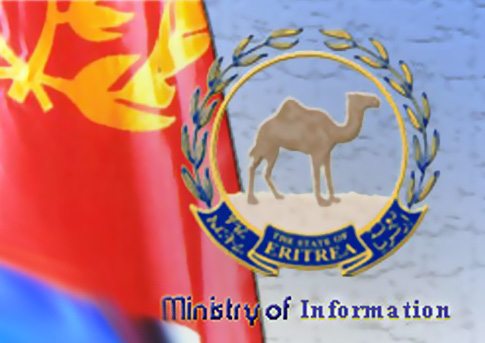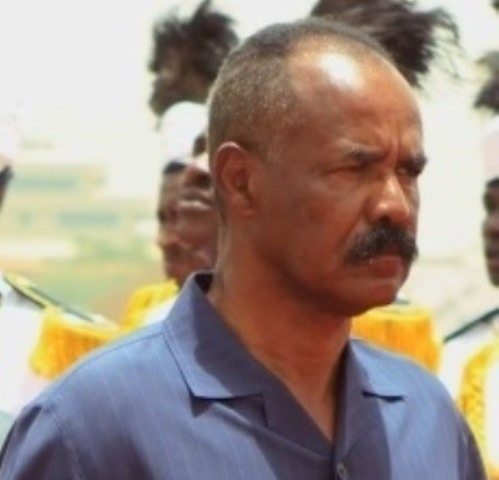A food security outlook update by FEWS NET indicated that ‘the influx of refugees from Somalia [to Ethiopia], estimated at 120,000 as of August 2011, has doubled the population in Dolo Ado. The influx has significantly declined in August due to improved assistance in Somalia and the Ramadan season.’
With regard to the situation in refuge camps, FEWS NET stated ‘the situation in the first two camps, Bokolomayo and Melkadida, which were established in 2009 and 2010, is better in terms the overall refugee conditions and assistance provision. However, in the recently established Kobe (June 2011) and Hilaweyn (opened August 5) camps, a measles outbreak is further aggravating acute malnutrition and under-five mortality rates.’
FEWS NET noted that ‘about 4.8 million people including an estimated 250,000 refugees from Somalia, South Sudan and Eritrea, continue to require assistance in Ethiopia.’
The food security outlook, distributed by e-mail on Wednesday, provides updates into the situation in Ethiopia’s southern and eastern region regions, the worst-hit by the current drought, as well as to the situation in the camps of populated by Somalian refugees.
FEWS NET (Famine Early Warning Systems Network) is a USAID-funded program set to provide early warning and vulnerability information on food security issues in some two dozen countries. Its partners include FAO, European Commission, UKaid(DFID), SIDA, UNICEF, and UNHCR.
The food security outlook update distributed by e-mail on Wednesday reads:
ETHIOPIA Food Security Outlook Update August 25, 2011
Dolo Odo and surrounding areas (Liben zone) 
• The influx of refugees from Somalia, estimated at 120,000 as of August 2011, has doubled the population in Dolo Ado. The influx has significantly declined in August due to improved assistance in Somalia and the Ramadan season.
• The government will be relocating an additional 17,500 refugees identified in August in Morodile, God Dhere, El‐Harr and Bare (Gode and Afder zones) to Dolo Ado in the near future.
• The situation in the first two camps, Bokolomayo and Melkadida, which were established in 2009 and 2010, is better in terms the overall refugee conditions and assistance provision. However, in the recently established Kobe (June 2011) and Hilaweyn (opened August 5) camps, a measles outbreak is further aggravating acute malnutrition and underfive mortality rates. According to the USAID’s monitoring information, 90 percent of the in patients in the Dolo hospital are refugees.
• About 40 percent of the local population in Dolo Odo woreda (46,849 people in August up from 9,854 in January to July) receives emergency food aid. The woreda requested assistance for additional 26,400 people. People not targeted for food aid are coming to Dolo town to beg and seek for support from others.
• About 17,000 of the population were receiving PSNP assistance for four months since the beginning of the year. In June 2011, the number of people receiving assistance rose to 37,809 and the distributions are already completed.
• Abnormal livestock deaths were observed. Animals are still concentrated in Filtu and Negele (Guji zone) areas, as well as around Genale River.
• Trucking of livestock to markets is not a viable option; transport costs are high, trucking requires an additional cost of animal feed, and trucking is only an option once per month as a part of a military convoy.
Southern and southeastern pastoral and agropastoral areas
• Cattle and shoats normally migrate to Filtu in the same zone in September. However, this year movements of animals began as early as February, and more than 200,000 animals with 14,000 pastoralists from Dolo Odo, Dolo Bay, and other woredas of Borena and Northern Kenya are unusually concentrated in Arero, and Yabello (Borena) and Negele (Guji) areas. Concentration of livestock will likely to cause resource‐based conflict and high incidence of animal disease.
Concentration of livestock will likely to cause resource‐based conflict and high incidence of animal disease.
• Monitoring reports indicate distress migration to towns and concentration around food distribution points, particularly in Gode, Adadle, Hudet, Kelafo, and Moyale woredas.
• [No change from previous report] Further excess animal mortality is expected towards the end of the current dry season (September) and the beginning of the Deyr rains (October) due to unusual prevalence of disease among severely weakened animals. However, in the most‐likely food security outcomes are expected to improve significantly after the September lean season peak due to: 1) normal rainfall and slow normalization of water and browse availability by November, significantly reducing household expenditures on water; 2) the timely return of transhumants with near‐normal numbers of milking animals ‐ goats and camel, and disposable assets, and 3) inflow of 2011 Meher harvests stabilizing or lowering cereal prices by November. Due to the poor access to information in the areas experiencing Phase 4, there is more uncertainty about these assumptions than about assumptions for other areas. If the rate of regeneration of pasture, browse and water points is significantly slower than usual; if transhumants face severe losses of livestock and poor conception rates during transhumance or return late; or if the Meher performs poorly (prices higher than expected) or is delayed, the food security outcomes would then remain at Phase 4 into October‐December.
Eastern Meher Cropping Areas
• The June to September Kiremt rains started on time in West Arsi and in the midlands and highlands of East and West Hararghe zones. However, the rains were three weeks late and erratic until the first week of August in the lowlands, including Fedis, Kurfa Chele, Midga Tola and Melka Belo, causing some farmers to replant three times. Pasture development and water availability in the lowlands also remain below average.
• Admissions to therapeutic feeding centers (OTP) are increasing.
• Monitoring information indicated that Meher cropping activities in North Shewa, North and South Wollo zones of Amhara is progressing well as the rains improved at the end of July. Since planting was late due to the poor rains in June and parts of July, the performance of crops will depend on the favorability of the rainfall in the remainder of the season.
Southern Nations Nationalities and People’s Region (SNNPR) 
• Long‐cycle crops (maize and sorghum) dependent on both Belg and Kiremt rains experienced 80 to 100 percent failure throughout the dry midlands and lowlands of Gamo Gofa maize and Root Crops Livelihoods Zone, Southern Special Woreda Lowland Cereal, and South Omo Pastoral Livelihood Zones of Gamo Gofa, Segen (Konso and Derashe), and South Omo zones.
• In Konso, admissions of malnourished children are 80 to 150 percent higher than last year.
• Community members have reported adult deaths due to an unusual swelling sickness.
• Maize prices are 150 to 200 percent higher than prices in January 2011, and 200 to 300 percent from prices last year the same time (Figure 4).
• Flash floods from Woito River inundated about 150 to 200 hectares of maize and sorghum fields in parts of Hamer woreda in South Omo; a report is not yet available on the level of damage.
National context
• About 4.8 million people including an estimated 250,000 refugees from Somalia, South Sudan and Eritrea, continue to require assistance in Ethiopia.
• The national inflation rate is almost 40 percent; the 12‐month moving average inflation rate is above 20 percent.
• Floods were reported in the flood prone areas including in parts of South and North Gondar; Kalu woreda of South Wollo; Ziquala and Sahela woredas of Wag Hamira ; Alamata woredas of Tigray, Mustahil of Gode, Lare of Gambela and parts of northern Afar. About 650 households have been displaced, mainly in Amhara and Gambela. About 20 causalities were reported in Kalu (South Wollo) and Antsokia (North Shewa).
• Further flooding is likely in Gode zone of Somali as the Shebelle River level is increasing. The impact will be severe this year as pastoralists with their animals are already concentrated around the riverbanks because of the drought.
Key information gaps and uncertainties
• Data on malnutrition prevalence (surveys or admissions data), data on mortality, data on morbidity
• Unskilled daily wage rates
• Somali region market functioning (prices, trader and household stocks, flows, etc.)
• Humanitarian assistance provision (actual food distributed), particularly in Somali region
• Household livestock holdings, particularly in pastoral areas; livestock movement and animal mortality or destocking, particularly among transhumant herds
Data sources
FEWS NET field monitoring, WFP, OCHA, USAID, Zonal Early Warning, Response and Food Security Offices, DRMFSS, Central Statistical Agency, Dolo Ado Woreda Disaster Preparedness and Prevention Office, Zonal Early Warning, Response and Food Security Offices
Seasonal calendar and critical events 
***********************
Check the Hunger Archive, Somalia Archive and Famine Archive for related posts.





